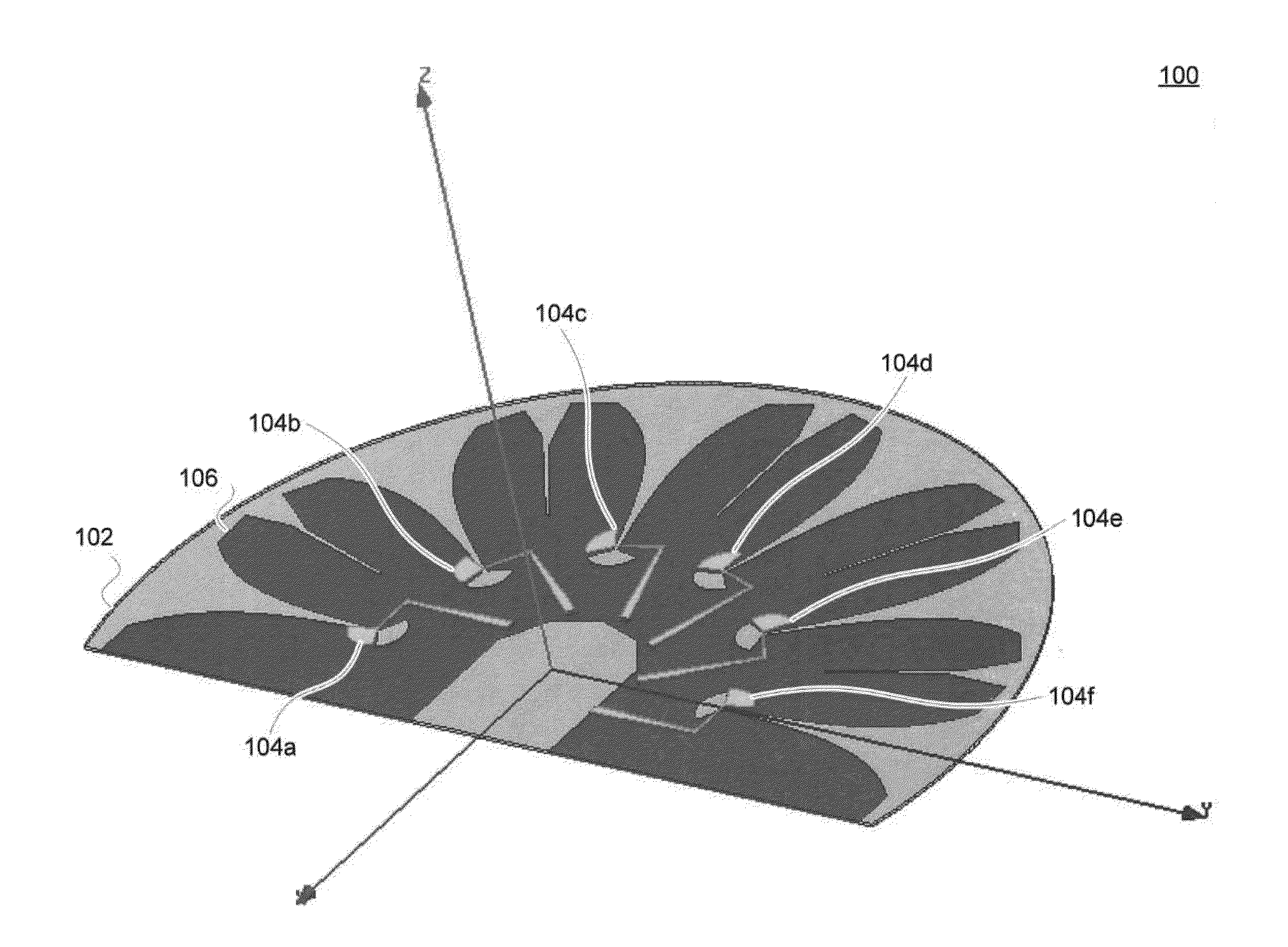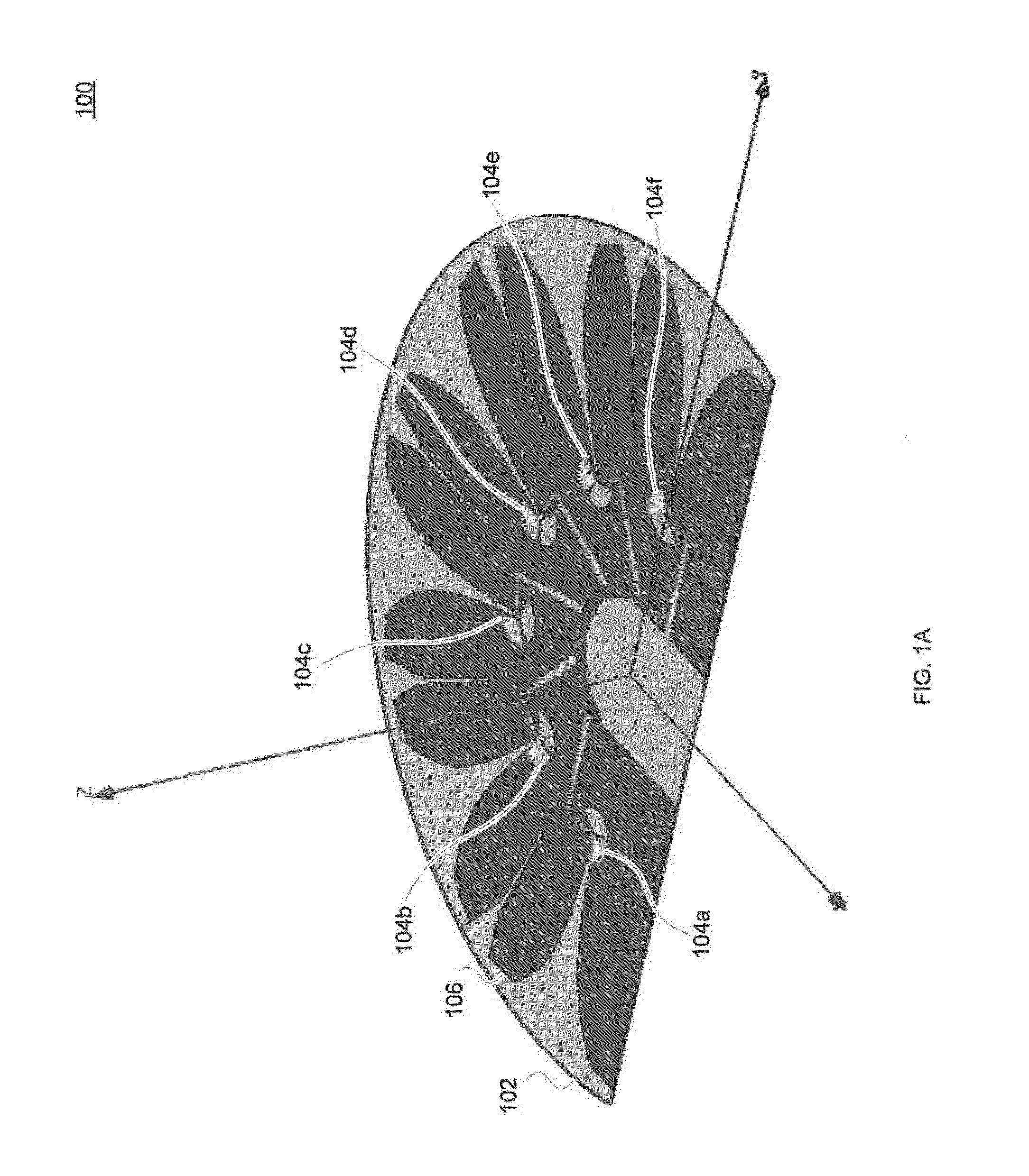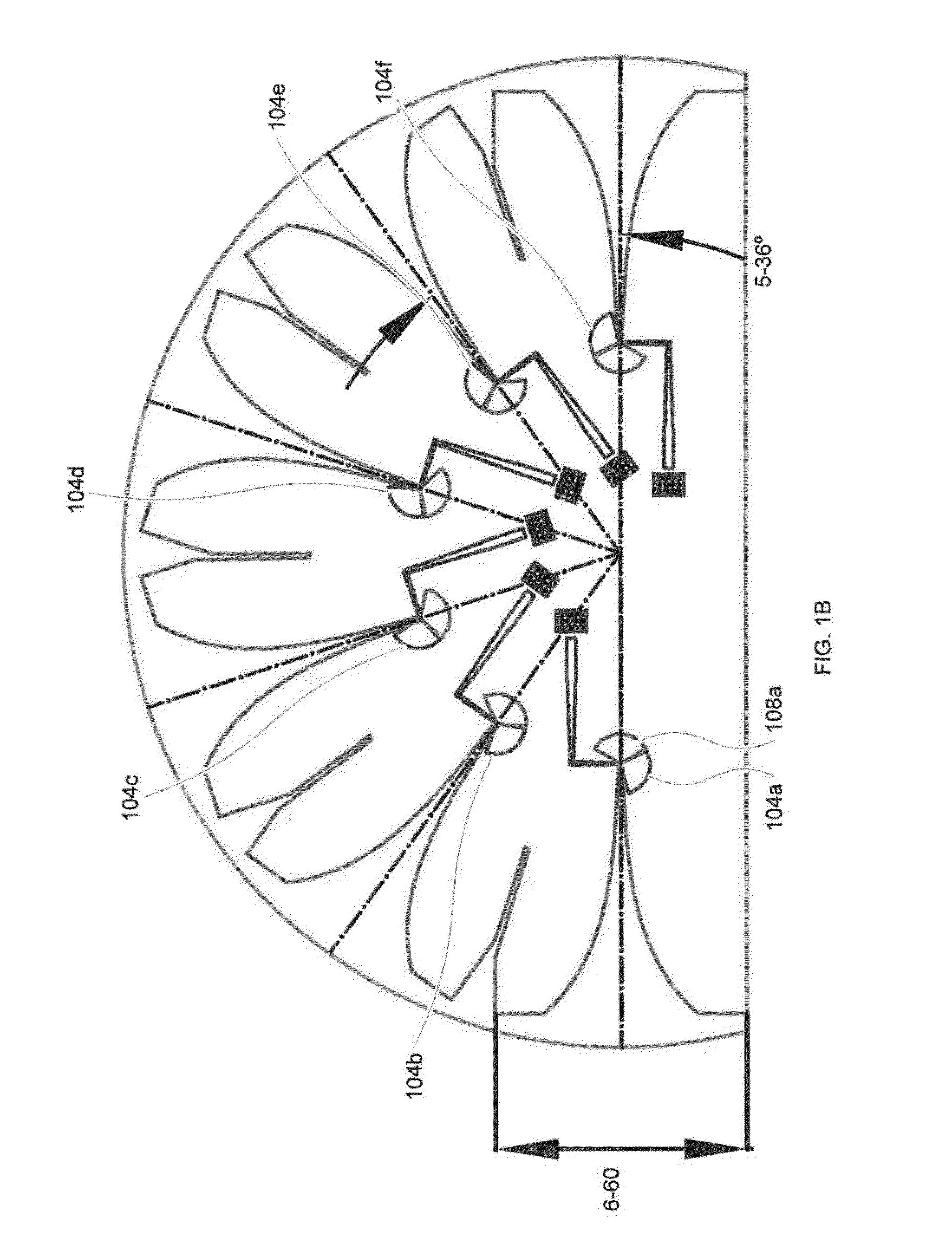Antennas
a technology of antennas and antennas, applied in the field of antennas, can solve the problems of low cost of existing wide-band and wide-area antennas, inability to support both 2.4-2.5 ghz and 4.9-5.9 ghz frequencies, and the inability to provide 180 degree horizontal beamwidth of most commercially available antennas
- Summary
- Abstract
- Description
- Claims
- Application Information
AI Technical Summary
Benefits of technology
Problems solved by technology
Method used
Image
Examples
Embodiment Construction
Antennas
[0044]Referring now to FIGS. 1A-1C, an antenna 100 is provided. Antenna 100 includes a dielectric substrate 102, a plurality of antenna elements 104 (e.g., 2, 3, 4, 5, 6, 7, 8, 9, 10, 11, 12, and the like) positioned on a first surface of the dielectric substrate 102, and a ground layer 106 mounted to an opposite surface of the dielectric substrate 102.
[0045]Dielectric substrate 102 is depicted as substantially transparent in FIGS. 1A and 1B so that the relative positioning of antenna elements 104 with respect to the geometry of ground layer 106 is visible, but can be opaque or translucent as depicted in FIGS. 1B and 1C. Dielectric substrate 102 can be fabricated from a variety of materials used in the manufacturing of electronic devices such as printed circuit boards. For example, dielectric substrate 102 can be fabricated from silicon, silicon dioxide, aluminum oxide, sapphire, germanium, gallium arsenide (GaAs), an alloy of silicon and germanium, indium phosphide (InP), a...
PUM
 Login to View More
Login to View More Abstract
Description
Claims
Application Information
 Login to View More
Login to View More - R&D
- Intellectual Property
- Life Sciences
- Materials
- Tech Scout
- Unparalleled Data Quality
- Higher Quality Content
- 60% Fewer Hallucinations
Browse by: Latest US Patents, China's latest patents, Technical Efficacy Thesaurus, Application Domain, Technology Topic, Popular Technical Reports.
© 2025 PatSnap. All rights reserved.Legal|Privacy policy|Modern Slavery Act Transparency Statement|Sitemap|About US| Contact US: help@patsnap.com



